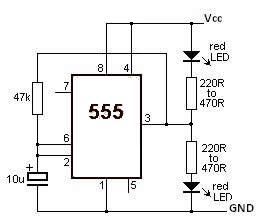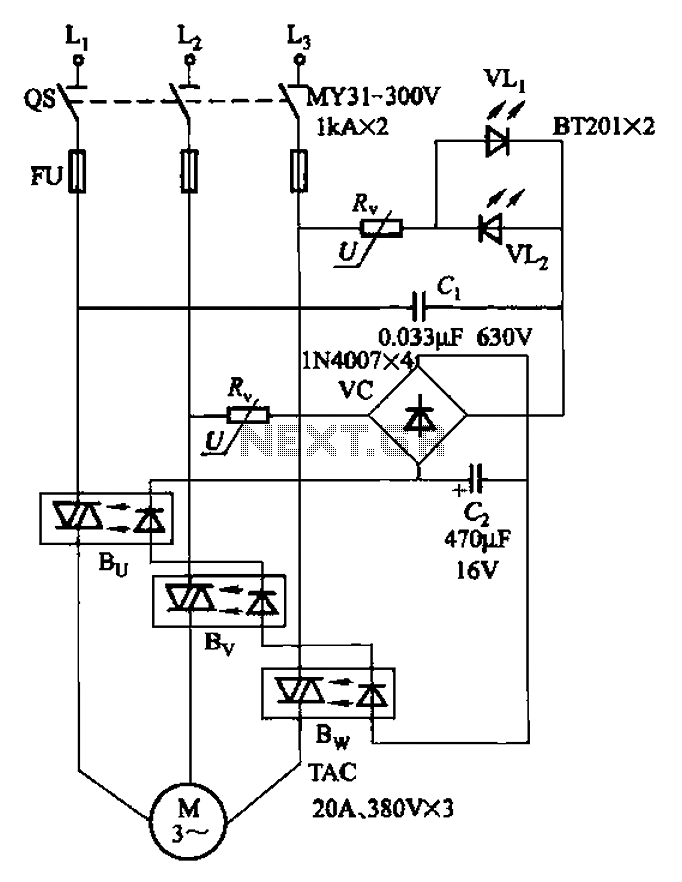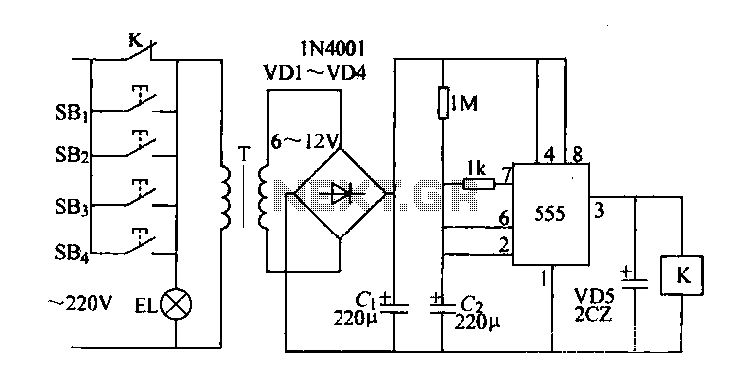
555 timer led flasher circuit

This LED flasher circuit utilizes a 555 timer integrated circuit (IC). The circuit diagram is straightforward and requires only a few external components. When operational, the red LEDs will flash sequentially at a predetermined frequency, similar to the indicators used at railway crossings.
The LED flasher circuit employs the 555 timer in astable mode, allowing it to produce a continuous square wave output. This configuration is ideal for generating the flashing effect of the LEDs. The frequency of the flashing can be adjusted by varying the values of two resistors and a capacitor connected to the timer.
Typically, two resistors (R1 and R2) and one capacitor (C1) are used to set the timing intervals. The relationship between these components determines the rate at which the LEDs will flash. The output from the 555 timer is connected to a transistor, which acts as a switch to control the current flowing through the LEDs. This configuration ensures that the LEDs receive sufficient current to illuminate brightly while also allowing for efficient power management.
In addition to the basic components, a diode may be included in the circuit to prevent reverse polarity, ensuring the longevity of the timer and LEDs. The circuit can be powered by a standard DC voltage source, commonly ranging from 5V to 15V, depending on the specifications of the components used.
This design can be implemented in various applications, such as decorative lighting, warning signals, or any scenario where a flashing LED indication is required. The simplicity of the circuit makes it an excellent choice for beginners in electronics, as well as for more experienced engineers looking for a quick solution for LED flashing applications.This LED Flasher circuit is based on the 555 timer IC. The LED Flasher circuit diagram is very simple and require few external components. When the circuit is working the red LEDs will flash at a set frequency one by one like at the railway crossing indicator. 🔗 External reference
The LED flasher circuit employs the 555 timer in astable mode, allowing it to produce a continuous square wave output. This configuration is ideal for generating the flashing effect of the LEDs. The frequency of the flashing can be adjusted by varying the values of two resistors and a capacitor connected to the timer.
Typically, two resistors (R1 and R2) and one capacitor (C1) are used to set the timing intervals. The relationship between these components determines the rate at which the LEDs will flash. The output from the 555 timer is connected to a transistor, which acts as a switch to control the current flowing through the LEDs. This configuration ensures that the LEDs receive sufficient current to illuminate brightly while also allowing for efficient power management.
In addition to the basic components, a diode may be included in the circuit to prevent reverse polarity, ensuring the longevity of the timer and LEDs. The circuit can be powered by a standard DC voltage source, commonly ranging from 5V to 15V, depending on the specifications of the components used.
This design can be implemented in various applications, such as decorative lighting, warning signals, or any scenario where a flashing LED indication is required. The simplicity of the circuit makes it an excellent choice for beginners in electronics, as well as for more experienced engineers looking for a quick solution for LED flashing applications.This LED Flasher circuit is based on the 555 timer IC. The LED Flasher circuit diagram is very simple and require few external components. When the circuit is working the red LEDs will flash at a set frequency one by one like at the railway crossing indicator. 🔗 External reference





